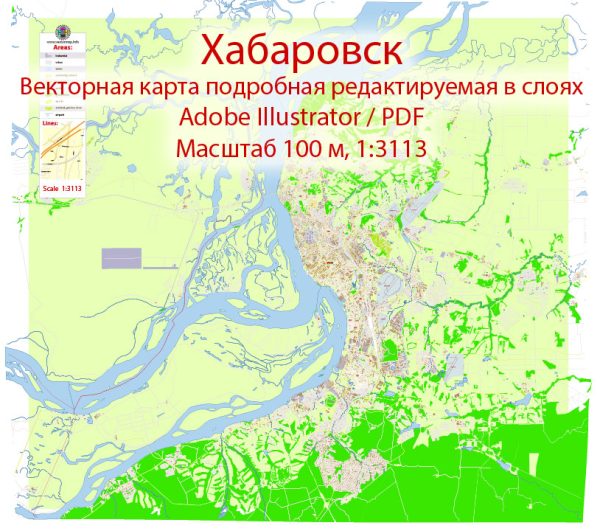Khabarovsk is a city located in the Russian Far East, and it has a rich and diverse history that reflects the region’s unique geopolitical and cultural context. Here’s a brief overview of Khabarovsk’s history:
- Early History: Before the arrival of Russian settlers, the area around Khabarovsk was inhabited by various indigenous peoples, including the Nanai, Ulchi, and Nivkhi. Russian explorers and Cossacks began to venture into the region in the mid-17th century, eventually leading to the establishment of Russian outposts.
- Russian Exploration and Settlement: The city’s history can be traced back to 1651 when Yerofey Khabarov, a Russian explorer and Cossack, led an expedition to the Amur River region. The city was founded as a military post in 1858 and named after Khabarov. The establishment of the city played a crucial role in Russia’s expansion into the Far East.
- Chinese and Japanese Influence: Khabarovsk’s location on the Amur River near the border with China led to periods of tension and cooperation with China and Japan. The city changed hands between Russian and Chinese control several times in the late 19th and early 20th centuries. The Treaty of Aigun (1858) and the Treaty of Peking (1860) solidified Russia’s control over the region.
- Soviet Era: Like many other Russian cities, Khabarovsk underwent significant development and transformation during the Soviet era. It became an important administrative and industrial center, and its population grew substantially. It played a crucial role in Soviet economic and military strategies in the Far East.
- World War II: During World War II, Khabarovsk was a major military and industrial hub. It was an important transportation and supply point for the Soviet Red Army in the fight against the Japanese in the region. In August 1945, it was the site of a significant Soviet military victory, which contributed to the end of the war with Japan.
- Post-Soviet Era: After the dissolution of the Soviet Union in 1991, Khabarovsk, like other parts of Russia, experienced significant economic and political changes. The city faced challenges related to economic transition, but it also opened up to new opportunities, including increased trade with neighboring countries in Asia.
Khabarovsk’s history is marked by its strategic location near the borders of China and Japan, its role in the expansion of the Russian Empire into the Far East, and its importance as a regional center in the Russian Far East. Today, Khabarovsk continues to be a vital city in the Russian Federation, with a diverse population and a mix of cultural influences from its history.


 Author: Kirill Shrayber, Ph.D.
Author: Kirill Shrayber, Ph.D.